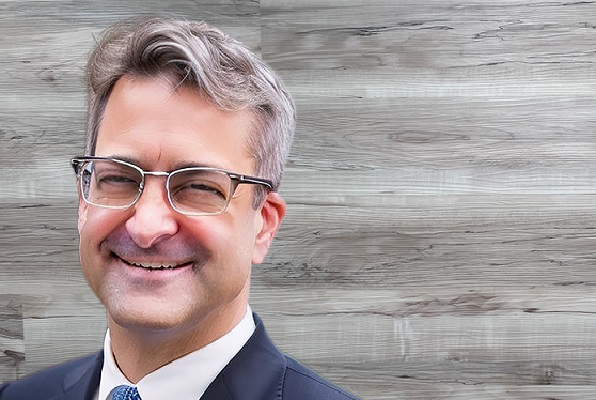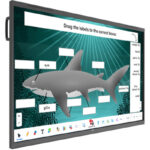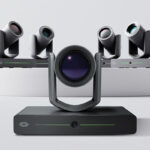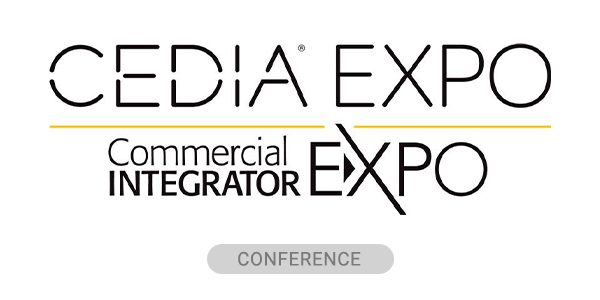This week, Commercial Integrator is delighted to induct our next #AVLivingLegends honoree: DLR Group‘s Raymond Kent, principal and senior design lead in audiovisual, theater planning and lighting design. Kent is an internationally recognized veteran. Indeed, his work has been seen on Broadway and in commercial and non-profit theater. Most notably, he has provided designs for premier clients, including the Rock Hall of Fame, The Las Vegas Mob Museum, the Smithsonian, Kennedy Center for the Arts and Playhouse Square.
Moreover, Kent has guest lectured for several colleges and universities internationally, and he has authored books on stage lighting and other technical subjects for theater. Undoubtedly, Raymond Kent deserves the title of an AV Living Legend!
In this exclusive interview, Kent speaks on his illustrious career in theater, sound, lighting and audiovisual design. As he reminisces, he imparts pearls of wisdom on how to best serve clients. As a powerful advocate for sustainability, Kent also underscores the importance of reducing the carbon footprint in the AV industry. Read on to learn more about Kent’s journey in the AV realm!
And if you’d like to read even more coverage relating to our #AVLivingLegends, such as DLR Group’s Raymond Kent, check out our hub page. That page, of course, includes direct links to every living legend!
Commercial Integrator: What motivated you to join the commercial AV industry?
Raymond Kent: My origin story takes many twists and turns to get me to where I am today — like many in the AV industry who did not start off with commercial AV in mind. I am a third-generation performing arts practitioner with close to four decades in the industry, having worked in a multitude of positions for various organizations, productions and in the non-profit/for-profit sectors. While I grew up in theater on stage and backstage, it was always the technical side that I kept finding myself in.
I had never actually considered working in the arts as a career; instead, my plan was to join the military and become a surgeon. However, life has its way, and I found myself back in theater completing a dual BFA degree in lighting and technical direction, then heading to the left coast to work in the industry. In my good fortune, I had the opportunity to design several shows around Los Angeles and Orange County for a number of venues, which included the opportunity to work with many great talents as a scenic, lighting and sound designer. That led me to graduate school at the David Geffen School of Drama (then Yale School of Drama) to take on another dual degree in lighting and production management. This led to the opportunity to take in as many classes as I could on a variety of subjects, including sound design studying under David Budries. I enjoyed the challenge of designing sound for various productions while there and took those skills with me after graduate school to a teaching position at Southern Illinois University in Edwardsville.
I eventually went back west to SoCal to work for the second time for The Laguna Playhouse as the resident technical director and as one of their designers, often designing projection and sound for shows along with scenery and lighting. A brief transition from theater into architecture happened after working on the Broadway production of Harvey and then, again, life happened. I wound back up in my hometown of Cleveland where I connected with one of the top architecture firms in the U.S. for cultural and performing arts, Westlake Reed Leskosky. Within a year of being there, we were designing the Bethel Woods Performing Arts Center (Woodstock) in Bethel, New York and I was asked to take over design of elements of the audiovisual system for the project from the previous designer. This is what launched the firm’s audiovisual design as a discipline. Shortly after, the firm’s partners and I started the Innovative Technology Design Group. This was a collection of technical specialties that allowed us to be a one-stop-shop for our cultural and performing arts work. It included theater consulting, acoustics, IT and security, lighting design, and of course, audiovisual design. It was through this, that my career in commercial AV was full steam.
Commercial Integrator: What has kept you motivated and engaged in the decades that followed?
Raymond Kent: The biggest driver of motivation has always been how I can best serve our clients. I have always loved a challenge, and if I can leverage our firm’s collective expertise to provide an authentic and personal solution that is on time and on budget, I feel like we have done our job. This is a business of relationships and trust. Building those relationships and providing that level of service to our clients affords us the opportunity to meet those challenges. I am also a tinkerer and very interested in the evolution of technology for solving those challenges. It has allowed us to stay on the bleeding edge and help push the industry forward.
Commercial Integrator: Reflect on your role as both a mentee early in your career and as a mentor later in your career. Who helped shape the trajectory of your professional life? How have you tried to help shape others’ careers?
Raymond Kent: I have had the good fortune of being mentored by many great people in my career. I have always been a sponge and taken advantage of any knowledge sharing opportunity in my life. I tend to seek out those who are willing to share what they have learned, and as a mentor, I work hard to do the same.
Whether it is with my students, coworkers, other industry professionals or people who for an otherwise fleeting moment cross my path, the exchange of ideas and knowledge will always be a two-way street to me. I learn from others as much as I like to share back. I learned this mostly from Jon Lagerquist of South Coast Repertory Theatre, Jim Ryan of Laguna Playhouse, many faculty at Yale and Dan Denhart of Ohio University where I attended undergrad. Most of all, from Paul Westlake, former managing partner at Westlake Reed Leskosky, who had the faith in me to found and lead the Innovative Technology Design Group, co-own a company with me (Sustainable Technologies Group), and provide guidance on many other levels, personally and professionally.
Commercial Integrator: What’s the most memorable story/anecdote of your career in commercial AV?
Raymond Kent: That is a hard question because I have had quite a significant number of experiences that could be worthy of that. However, I will go with this one: I had the extraordinary opportunity to design the sound and virtual lighting for a major exhibit for the Cleveland Museum of Art called “Revealing Krishna: Journey to Cambodia’s Sacred Mountain” that leveraged a fantastic number of multimedia and augmented reality using Microsoft’s Hololens II. Being part of the team that was able to tell the story of this artifact in new and compelling ways for the museum by bringing a realistic soundscape to the experience, then having it get installed at the Smithsonian Asian Art Museum and have the curator comment on the soundscape as to its accuracy, despite having made it all up, was a high compliment. We were proud to receive so many awards for the exhibit including a Peggy Ezekiel Award for Outstanding Sound Design through the United States Institute for Theater Technology.
Commercial Integrator: What has been your greatest professional accomplishment to date?
Raymond Kent: There are many accomplishments I am proud of, but I would have to say it has been my close to two decades worth of work on the issue of sustainability in the commercial AV industry especially through AVIXA. Sustainability has always been at the forefront of my life. My father came out of the Great Depression, and we were raised not to waste anything. I had the opportunity to work with AVIXA (then InfoComm) early on under Scott Walker in the Green AV Task Force and the Sustainable AV Task Force. This was then followed by contributing to the writing of the Sustainable Technology Environment’s Program (STEP) rating system and serving as the Chair to the STEP Foundation’s Technical Advisory Committee under Allen Weidman’s leadership. In addition, I wrote for AVIXA’s blog on sustainability and had a monthly article for rAVe Publications (Aeiforia Technos) and several other articles for a variety of other national and international journals on sustainability and technology. I am now honored to be on the Board of SAVe and part of AVIXA’s Sustainability Task Force Subcommittee on Best Practices hoping to help the industry move in a positive direction on reducing the carbon footprint of our industry.
Commercial Integrator: What has been your biggest professional regret to date?
Raymond Kent: I work hard to never regret anything. Everything is either a lesson or a success. My only real regrets are opportunities I never took.
Commercial Integrator: What’s the best advice or pearl of wisdom you either received during your career or came to realize on your own?
Raymond Kent: Biggest advice I can give anyone is to be authentic, honest and eager to learn from anywhere. It has taken me far in my career, and I often tell my students that!
Would you like to nominate a peer or colleague — or perhaps yourself! — to be featured in this #AVLivingLegends series, just like Raymond Kent from DLR Group was? If so, just email Dan Ferrisi, group editor, commercial and security, Emerald, at [email protected].










